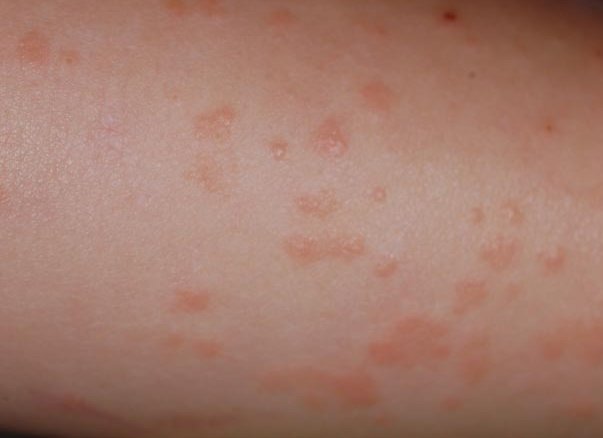Better known as papular acrodermatitis of childhood, Gianotti Crosti is a skin condition that is an unusual reaction to a viral illness.
What does Gianotti-Crosti look like and where does it appear?
While there are many viruses that trigger Gianotti Crosti, the responses are very similar in appearance consisting of widespread, symmetric, flat-topped brown and pink papules. They are located primarily on the buttocks and can expand onto the surfaces of the arms and onto the face.
Gianotti Crosti is seen primarily in children ages six months to 14 years old and the majority of the cases occur before school age. The outbreak lasts anywhere from 3 to 4 weeks, and can last as long as 8 weeks.
What are the causes of Gianotti-Crosti?
Gianotti Crosti can be caused by Hepatitis A, B or C types, the HIV virus, enterovirus, or parvovirus B19, more commonly known as fifth disease. Epstein-Barr virus, which causes infectious mononucleosis, can also cause papular acrodermatitis. Additionally, the skin condition may appear after immunizations against viral illnesses such as the influenza virus.
What is the best course of treatment?
Gianotti Crosti is self-limited, so it will mostly resolve itself. If the papules are itchy, they can be treated with topical steroids.
If you have papular acrodermatitis, that means you do have some type of viral infection. The importance of the skin condition is relatively minor; the diagnosis of the viral illness should be considered. If it is a common virus, it’s not a concern. If it is something such as infectious mononucleosis or the hepatitis viral infection, it should be identified and treated.
You can schedule same day and next day appointments at Dermatology Consultants by calling 651-209-1600 or on our website.




